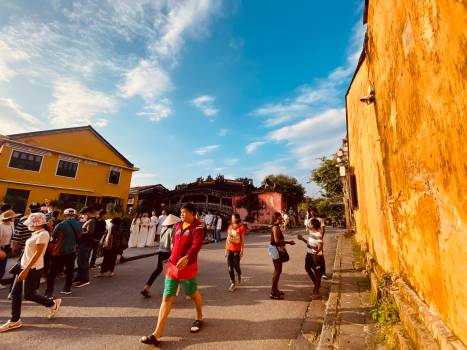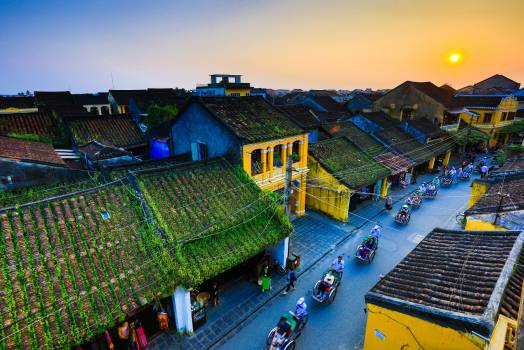
The project "The town for pedestrians and primitive vehicles" was put under test on 24 July 2014, however the idea of an ancient town without motorbike engine noise had been hatched since the 90s of the 20th century when the staff of Hoi An Center for Culture and Sports took a survey about the development of the ancient town to plan for tourism development. "The walking town" has been a tourism brand of Hoi An that not only expand space, but also lengthen the timeframe to meet the needs of tourists.

In 2017, the Party, authorities and people of Hoi An successfully completed the socio-economic targets and tasks set by the People's Council. The production value in comparision with 2010’s was estimated at 8,653.951 VND, increasing 16.56%; Of which, Tourism-services and commerce sector increased 17.19%; the industry and small industry increased 19.97%; Agriculture increased 2.07%. Per capita income reached 40.97 million VND, increased 4.19 million VND compared to 2016.

Recently, the People's Committee of Hoi An city has had a review for the socio-economic of the city in the first nine months of 2015.

Hoi An, is a land rich in traditions of revolutionary, history and culture, is collected through the ages and it used to be well-known as an international market with many different names, such as Lam Ap, Faifo, Hoai Pho and Hoi An ...

Hoi An Old Town is located 30km south of Danang City, and 60km northeast of Tam Ky. Hoi An used to be an international trade center by sea on the east area in the 16th and 17th centuries. It was the busiest trading port in Dang Trong region of Vietnam during the reign of Nguyen as merchants f-rom Japan, China, Portugal, Spain, Holland...often stopped over to exchange and purchase commodities.